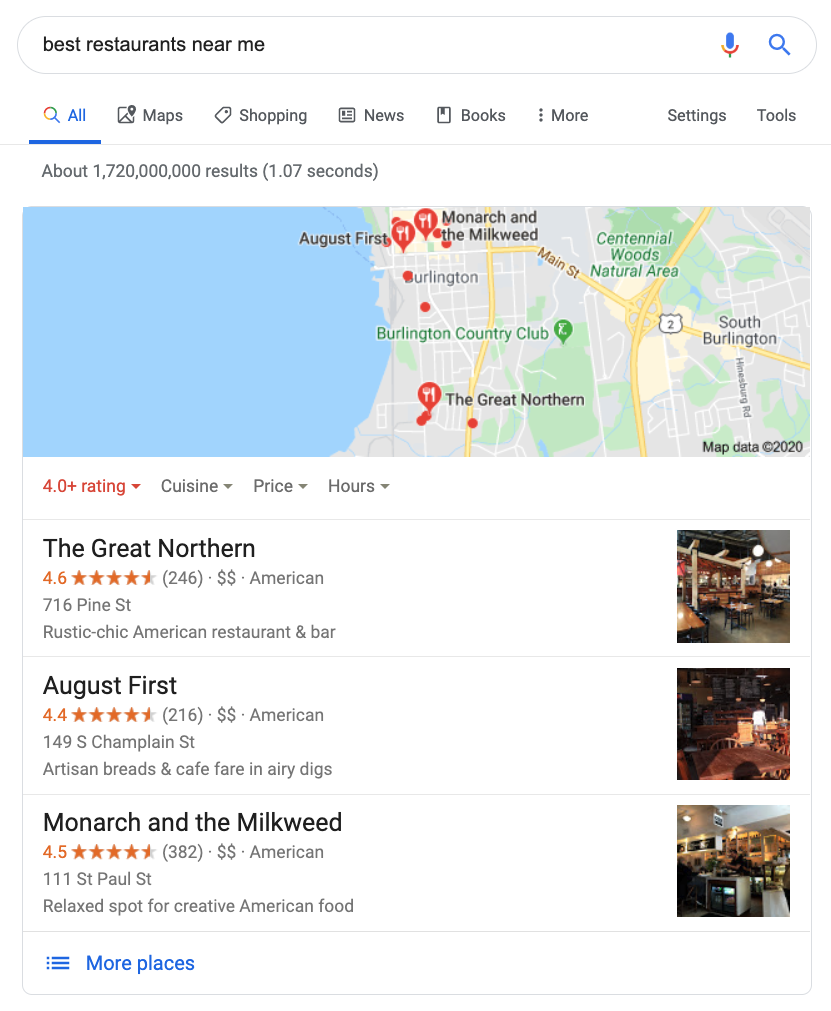Making a Claim After a Car Accident
If you’ve found yourself in the unfortunate situation of a car accident, the last thing you want to deal with is the hassle of filing an insurance claim. But don’t worry, we’ve got you covered. Here’s a step-by-step guide on how to make a car insurance claim.
Understand Your Policy
Before you even think about filing a claim, it’s important to understand your insurance policy. What kind of coverage do you have? What’s your deductible? What’s the procedure for filing a claim? Take some time to read through your policy and make sure you have a good understanding of what it covers. If you have any questions, don’t hesitate to contact your insurance company.
Here are some specific things to look for in your policy:
* The types of coverage you have (e.g., collision, comprehensive, liability)
* Your deductibles for each type of coverage
* The limits of your coverage (e.g., the maximum amount your insurance company will pay for a claim)
* The procedure for filing a claim (e.g., who to contact, what information you need to provide)
Once you have a good understanding of your policy, you can start the process of filing a claim.
Making a Car Accident Claim: A Comprehensive Guide
Dealing with the aftermath of a car accident can be overwhelming. If you’re the victim, filing an insurance claim can ease the financial burden and help you get back on your feet. Here’s a step-by-step guide to making a claim:
Gather Evidence
Before you file a claim, gather as much evidence as possible. This includes:
-
Contact information: Exchange details with the other driver(s) involved, including names, addresses, phone numbers, and insurance companies.
-
Police reports: If the police were called, obtain a copy of the report. It’s an official record of the accident that can support your claim.
-
Photos or videos: Take photos or videos of the damage to your vehicle, as well as any visible injuries. These can provide valuable evidence to your insurance company.
Making a Car Accident Claim
After a car accident, it’s crucial to know how to file a claim to get the compensation you deserve. One of the most important steps is to contact your insurance company promptly.
Contact Your Insurance Company
Do not delay in contacting your insurance provider. Call their hotline immediately, even if you are not at fault. Provide them with all the necessary details, including the other driver’s information, a description of the accident, and any injuries sustained. By initiating the claim process, you’ll set the wheels in motion for a smooth resolution.
Gather Evidence
A key aspect of making a successful claim is gathering evidence to support your case. This includes taking photos of the accident scene, collecting witness statements, and keeping track of any medical bills and expenses incurred. Additionally, do not forget to obtain a copy of the police report, as it will provide valuable information.
Determine Fault
Establishing fault is essential in determining liability and the amount of compensation you may be entitled to. In most cases, the at-fault driver’s insurance company will be responsible for covering the damages and injuries. If the accident was caused by multiple parties, the responsibility will be shared.
Negotiate with the Insurance Company
Once you have gathered all the necessary documentation and determined fault, you will need to negotiate with the insurance company to reach a fair settlement. This involves submitting your claim, providing evidence, and discussing the amount of compensation you are seeking. It’s important to be prepared to provide documentation to support your claims and to be willing to negotiate within reason.
Seek Legal Advice if Necessary
If you are having difficulty communicating with the insurance company or believe you are not receiving a fair settlement offer, it may be advisable to seek legal assistance. An experienced attorney can represent your interests, help you navigate the legal process, and strive to ensure you receive the compensation you deserve.
Making a Car Accident Claim: A Comprehensive Guide
Navigating the complexities of a car accident can be overwhelming, especially when it comes to filing a claim. To ensure a smooth and successful process, follow these expert tips and strategies.
Gather Evidence and Documentation
Your claim hinges on concrete evidence. Gather all relevant documents, including the police report, detailing the accident circumstances. Obtain medical records documenting your injuries and any subsequent treatment. Additionally, collect repair estimates for your damaged vehicle.
Contact Your Insurance Company
Promptly inform your insurance company about the accident. They will assign a claims adjuster to guide you through the process. Provide them with the gathered documentation and cooperate fully with their investigation.
Determine Liability
Establishing who is at fault for the accident is crucial. If the other driver was clearly responsible, your insurance company will likely pursue a claim against their insurer. However, if the liability is disputed, you may need legal assistance to navigate the complexities.
Negotiate a Settlement
Once liability is determined, you will negotiate a settlement with the insurance company. This involves determining the value of your claim, considering medical expenses, lost wages, pain and suffering, and vehicle damage. Don’t hesitate to consult with an attorney if you feel the settlement offer is inadequate.
File a Lawsuit (If Necessary)
In rare cases, a lawsuit may be necessary if negotiations fail to reach a fair settlement. This is a more complex and adversarial process, requiring legal representation. However, it may be the only avenue to obtain the compensation you deserve.
Additional Tips
- Stay calm and collected at the accident scene.
- Take photos of the damage and the scene.
- Get witness contact information.
- Seek medical attention promptly, even if you don’t feel injured.
- Don’t admit fault or sign anything without consulting your insurance company.
- Keep a record of all expenses related to the accident.
- Don’t be afraid to get help from an attorney if needed.
Remember, making a car accident claim can be a challenging but necessary process. By following these steps and seeking professional guidance when necessary, you can protect your rights and ensure a fair outcome.
Making a Claim After a Car Accident
If you’ve had the misfortune of being involved in a car accident, you’ll need to file a claim with your insurance company to cover the costs of repairs or medical expenses. Here’s a comprehensive guide to making a car accident claim that will help you navigate the process seamlessly:
Gather Essential Information
In the immediate aftermath of an accident, it’s imperative to remain calm and collect as much information as possible. This includes exchanging contact and insurance details with the other driver(s) involved, taking photos of the damage, and obtaining a police report if necessary.
Notify Your Insurance Company
Inform your insurance company about the accident promptly. They will assign an adjuster to handle your claim and guide you through the process.
Cooperate with Adjuster
Allow the insurance adjuster to inspect your vehicle and gather information about the accident. Be forthcoming with details and provide any documentation that supports your claim. By cooperating fully, you’ll help expedite the claim process and ensure a fair settlement.
Document Your Injuries
If you’ve sustained any injuries in the accident, seek medical attention promptly and document your treatment. Keep a record of all medical bills, prescriptions, and doctor’s notes. This documentation will serve as evidence of your injuries and help support your claim for compensation.
Determine Fault and Liability
Establishing who was at fault for the accident is crucial in determining liability and coverage. The police report, witness statements, and your own account of events will all be considered when assigning fault. Your insurance company will work with you to determine the appropriate liability and coverage for the claim.
Negotiate a Settlement
Once liability has been established, you will negotiate a settlement with the insurance company. This involves reaching an agreement on the amount of compensation you will receive for your damages and injuries. Be prepared to provide documentation to support your claim and be willing to compromise within reason.
Questions to Ask Yourself
- Who is at fault for the accident? This will determine which insurance company is responsible for paying the claim.
- What are my damages? This includes the cost of repairs to your vehicle, medical expenses, and any other losses you have incurred.
- What is my pain and suffering worth? This is a more subjective amount that compensates you for the physical and emotional distress caused by the accident.
- How much should I settle for? This is a negotiation that you will need to make with the insurance company.
Conclusion
Filing a car accident claim can be a complex and stressful process. However, by following these steps and working closely with your insurance company, you can ensure that your claim is handled fairly and efficiently. Remember to document everything, cooperate with the adjuster, and don’t hesitate to seek legal advice if necessary.
Making a Car Accident Claim: A Comprehensive Guide
If you’ve been involved in a car accident, the process of making a claim can be daunting. But by following these steps, you can improve your chances of getting a fair settlement.
.
Document the Accident
Immediately after the accident, it’s crucial to gather as much information as possible. This includes taking photos of the damage, getting the contact details of any witnesses, and filing a police report if necessary.
Contact Your Insurance Company
As soon as possible, notify your insurance company about the accident. They will assign an adjuster to investigate the claim and determine how much you’re entitled to.
Get a Medical Examination
Even if you don’t feel injured, it’s important to seek medical attention. Some injuries may not be immediately apparent, and getting a medical record will protect your health and your claim.
Estimate Your Damages
Make a list of all the costs associated with the accident, including medical expenses, property damage, and lost wages. This will help you determine a fair settlement amount.
Negotiate a Settlement
Once the adjuster has reviewed your claim, they will make a settlement offer. This is where the negotiation process begins.
Negotiating a Settlement
Be prepared to negotiate the amount of the settlement. The adjuster will likely start with a low offer. Don’t be afraid to counteroffer and provide evidence to support your claim.
If you can’t reach an agreement with the adjuster, you may need to consider hiring an attorney. An attorney can help you protect your rights and negotiate a fair settlement.
Additional Tips
- Keep copies of all documents related to the accident, such as medical records, repair bills, and police reports.
- Be prepared to provide evidence of your injuries and damages.
- Don’t sign any documents without reading them carefully.
- Be patient. The claims process can take time.
- Don’t hesitate to ask for help from your insurance company, an attorney, or a family member.
Remember, making a car accident claim can be a stressful experience. But by following these steps, you can increase your chances of getting a fair settlement and moving on with your life.
Making a Car Accident Claim
Filing a car accident claim can be a daunting task, but it’s essential to protect your rights and ensure you receive fair compensation for your damages. Here’s a comprehensive guide to help you navigate the process:
Reporting the Accident
Immediately after the accident, report it to the police and obtain a copy of the accident report. This document will provide crucial information for your insurance claim.
Contacting Your Insurance Company
Reach out to your insurance company promptly to report the accident. They will assign you a claims adjuster who will guide you through the process.
Gathering Evidence
Document the accident scene thoroughly by taking photos and videos. Obtain witness statements, if possible. Additionally, keep all medical records and receipts related to your injuries.
Determining Fault
Insurance companies will investigate the accident to determine fault. This involves reviewing the police report, witness statements, and other evidence. If you’re found not at fault, the other driver’s insurance company will be responsible for covering your damages.
Valuing Your Claim
Your insurance company will assess your damages to determine the value of your claim. This includes medical expenses, property damage, lost wages, and pain and suffering.
Negotiating a Settlement
Once the claim has been valued, your insurance company will negotiate a settlement with the other driver’s insurer. This process involves back-and-forth communication and compromise.
Finalize Settlement
Agree on the settlement amount, payment method, and repair or replacement options. Once you have reached an agreement, sign a release form to finalize the settlement.
Protect Your Rights
Throughout the claims process, it’s crucial to advocate for your rights. Don’t hesitate to contact your insurance company with any questions or concerns. Consider consulting an attorney if you have a complex case or are dissatisfied with the settlement offer.
Remember, filing an insurance claim after a car accident can be a complex process, but by following these steps and protecting your rights, you can ensure a fair resolution.
Making a Car Accident Claim
After a car accident, you may have a lot of questions about how to file a claim. Here’s a step-by-step guide to help you get started.
1. Report the Accident to Your Insurance Company
As soon as possible after the accident, you should report it to your insurance company. They will need to know the details of the accident, including the other driver’s name and insurance information.
2. Get a Copy of the Police Report
If there was a police report, you should get a copy of it. This will provide you with an official record of the accident.
3. Gather Evidence
In addition to the police report, you should gather any other evidence that you can, such as photos of the damage, witness statements, and medical records.
4. File a Claim
Once you have gathered all of the necessary information, you can file a claim with your insurance company. They will review your claim and determine whether you are entitled to benefits.
5. Negotiate a Settlement
If your insurance company approves your claim, you will need to negotiate a settlement with the other driver’s insurance company. This is a process of back-and-forth negotiations until both parties agree on a fair settlement amount.
6. Repair or Replace Your Vehicle
Once you have agreed to a settlement, you can arrange repairs or replacement for your vehicle. You can either use the money from the settlement to pay for the repairs yourself or you can have the insurance company arrange for repairs on your behalf.
7. Get Medical Attention
If you were injured in the accident, it is important to get medical attention as soon as possible. Even if you don’t feel like you have been seriously injured, it is important to get checked out by a doctor to rule out any hidden injuries.
8. Hire an Attorney
In some cases, it may be helpful to hire an attorney to help you with your claim. This is especially true if the accident was serious or if you are having trouble negotiating a fair settlement with the insurance company.
Reporting a Car Accident
If you’re involved in a car accident, it’s crucial to report it to your insurance company promptly. Make sure to gather as much information as possible at the scene, such as the names and contact information of the other drivers involved, any witnesses, and the police report number.
Filing an Insurance Claim
After reporting the accident, you’ll need to file an insurance claim. This typically involves submitting a form to your insurance company, along with any supporting documentation, such as a police report or photos of the damage. You’ll also need to provide a detailed account of the accident and any injuries or damages sustained.
Assessing Damages
Your insurance company will assess the damages to your vehicle and determine the amount of compensation you’re entitled to. This may involve sending an adjuster to inspect the vehicle and estimate the repair costs. If your vehicle is totaled, you’ll receive the actual cash value of the car.
Deductibles
Most car insurance policies have a deductible, which is the amount you have to pay out-of-pocket before your insurance coverage kicks in. The amount of your deductible will impact the amount of compensation you receive.
Timelines
Insurance companies have specific timelines for filing claims and processing payments. It’s important to adhere to these timelines to ensure your claim is processed promptly.
Potential Legal Implications
If the accident resulted in significant injuries or property damage, there may be potential legal implications. You may need to consult with an attorney to determine your legal rights and options.
Additional Considerations
Understand Deductibles
Timelines
Potential Legal Implications
Understanding these additional factors will help you navigate the claims process more effectively and protect your rights.




Leave a Reply